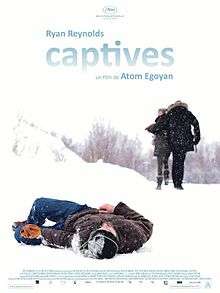
Dispatch (band)
Dispatch is an American indie/roots band. The band consists of Brad Corrigan (vocals, drums, guitar, percussion, and harmonica), Pete Francis Heimbold (vocals, bass and guitar), and Chad Urmston (vocals, guitar, bass, and percussion).
The band, which is based in the Boston area, was originally active from 1996 until 2002. The members then announced a hiatus, which would ultimately last for almost a decade; during this period, the band came together for reunion concerts in Boston (2004), New York City (2007) and Washington, D.C. (2009). The hiatus ended in the beginning of 2011, when the band announced a national tour. In May of the same year, Dispatch released an EP containing six new songs, their first all-new release since 2000. The band released both their first studio album in over a decade, Circles Around the Sun, and an iTunes session in 2012 and toured North America that summer in support of the album. On April 22, 2013, Dispatch announced a double-disc live album called "Ain't No Trip to Cleveland Vol. 1," released on June 4, 2013.
The Captive
The Captive may refer to:
Art
Books
Films
Music
See also

The Captive (2014 film)
The Captive, formerly Queen of the Night and Captives, is a 2014 Canadian thriller film directed by Atom Egoyan and co-written with David Fraser. The film stars Ryan Reynolds, Scott Speedman, Rosario Dawson, Mireille Enos, Kevin Durand, and Alexia Fast. It was selected to compete for the Palme d'Or in the main competition section at the 2014 Cannes Film Festival. The film was released in select theaters and on demand on December 12, 2014.
The film has a nonlinear presentation and only context differentiates the current scenes from the flashbacks. Additionally, although the film takes place over eight years, all of the scenes take place during winter for dramatic effect.
Plot
At a police station in Niagara Falls, Ontario, new detective Jeffrey Cornwall is sitting down for a job interview with Nicole Dunlop who works in the Internet Child Exploitation Unit. He recoils in disgust after seeing the images related to open cases and Nicole tells him that these are the images he will have to see every day. Meanwhile, Niagara Falls resident Matthew Lane picks his nine year old daughter Cassandra up from the arena after her figure skating practice. He comments that her wearing one white skate and one black skate is an unnecessary gimmick given her skill. On the way back, Matthew stops to pick up pie, leaving Cassandra in the car. Minutes later he returns to find her missing and calls out to no success. He reports the abduction to the police station where Dunlop and Cornwall are assigned to the case. Cassandra's mother Tina Lane arrives and breaks down in a fit of fury directed at Matthew.

The Captive Slave
The Captive Slave is a portrait painted by the artist John Simpson (1782–1847), which was first exhibited in London in 1827. It shows a man, manacled, on a stone bench and looking pensively or plaintively upward. Its subject matter, historical period, and mode of creation suggest the artist intended the painting as a statement against slavery. Until acquired by the Art Institute of Chicago in 2008, it had not been displayed to the public for 180 years.
Simpson's painting
The three-quarter portrait shows a dark-skinned man in orange-red open collar clothing, sitting on a stone bench, against a muted background, with the sitter taking up most the frame. Large metallic manacles are visible around his wrists, which lie on his lap, and a heavy chain falls across the bench and out of the frame. The man is gazing up and to his left. At its original showing it was entitled, The Captive Slave, and the viewer is informed of the sitter's condition as a slave by the manacles and by his dark skin, which connects him to the African slave trade. His clothes suggest somewhat foreign origin but also prison garb. The features of the subject show the man as a recognizable individual person. The painting is described as a portrait but also a hybrid with genre painting, as the name of the character in the painting is unknown. His aspect is saintly or heroic, imploring, vulnerable, and somewhat passive in rest, which allowed the British viewer when the portrait was shown to safely sympathize or pity the subject and deplore his condition. While the portrait follows high art conventions for depicting the saintly or long suffering, portraits of individual slaves were rare in the European high art tradition.
Podcasts:

The Slave
by: AssaultIt's time to wake up
And get my feet back on the ground
But I can feel my heart burning
And my mind going blank
I'm turning into a hollow shell
And I try to block it out
You try to send me to the other side
But I'm already there
Who do you think you are?
And what do you want?
I will rip your insides out
And take you apart
I am welcoming you and your wrath
And the pain is piercing my flesh
Blood fills my mouth
But I smile
You are weak
I can see it in your eyes
You will beg for your soul
As I take control
Fight for your life
I want you to try
It just takes me to a greater high
Who do you think you are?
And what do you want?
I will rip your insides out
And take you apart
Who do you think you are?
And what do you want?
I will rip your insides out
And take you apart
Now it's over
I will send you to your grave
You will fall into nothingness
And forever be our slave
Your swan song cuts through the night
And leads my soul closer
